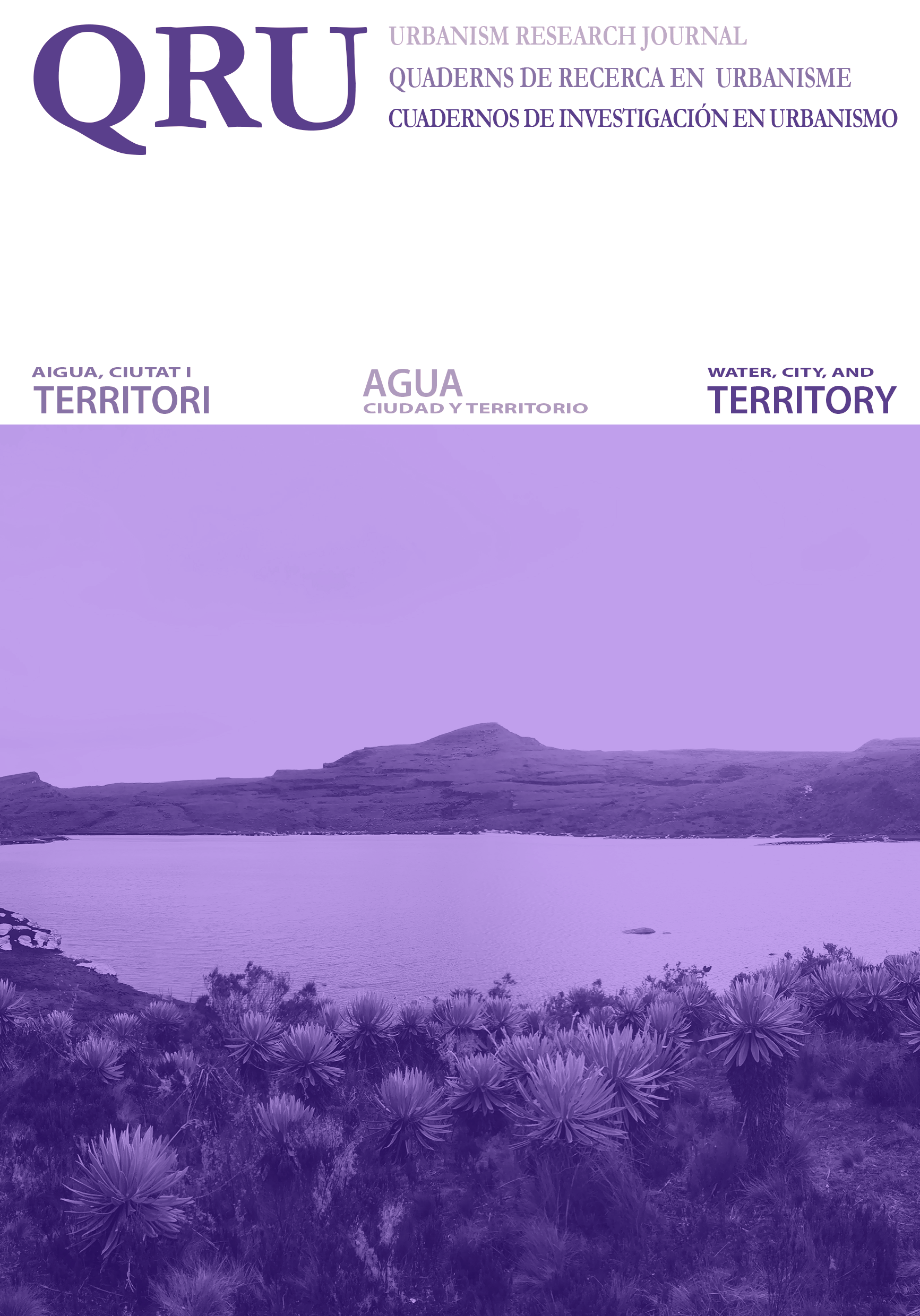PUBLIC GROUND AS COASTAL DEFENCE IMAGINING THE MEDITERRANEAN BEACHFRONT BY THE ATLANTIC
Imagining the Mediterranean beachfront by the Atlantic
DOI:
https://doi.org/10.5821/qru.11944Resumen
The article explores the role of public ground composition design as a defence element for coastal agglomerations vulnerable to sea level rise in extreme weather events scenarios. It addresses one of the pilot case studies of the [ENTRA]MAR Urban form intertwined with the sea research project, Quarteira, a coastal city located in the Algarve region of southern Portugal, which is vulnerable to flooding and erosion phenomena. The article provides an opportunity to systematise the reading and interpretation phases and also the research by-design phase based on scenario development that was conducted during the fourth-year design studio at the Lisbon School of Architecture of the Universidade de Lisboa and therefore, to share its preliminary results on "imagining the Mediterranean beachfront by the Atlantic". Attributing Mediterranean values and characteristics to Quarteira involves, as Braudel wrote in Les Mémoires de la Méditerranée, observing the coastal landscapes over and over again, until the physical and urban characteristics are eloquently revealed and named. Finally, it is underlined the need to design the space between land and sea based on the inherited memory of the coastal landscape and the operative role the public ground design may have as coastal defence.
Publicado
Versiones
- 2023-05-05 (2)
- 2023-04-24 (1)
Número
Sección
Licencia
Aquellos autores/as que tengan publicaciones con esta revista, aceptan los términos siguientes:
Los autores/as conservarán sus derechos de autor y garantizarán a la revista el derecho de primera publicación de su obra, el cuál estará simultáneamente sujeto a la Licencia de reconocimiento de Creative Commons CC BY-NC-ND- 4.0 que permite a terceros compartir la obra siempre que se indique su autor y su primera publicación esta revista, pero no se pueden cambiar ni se pueden utilizar comercialmente.
Los autores/as podrán adoptar otros acuerdos de licencia no exclusiva de distribución de la versión de la obra publicada (p. ej.: depositarla en un archivo telemático institucional o publicarla en un volumen monográfico) siempre que se indique la publicación inicial en esta revista.
Se permite y recomienda a los autores/as difundir su obra a través de Internet (p. ej.: en archivos telemáticos institucionales o en su página web) antes y durante el proceso de envío, lo cual puede producir intercambios interesantes y aumentar las citas de la obra publicada. (Véase El efecto del acceso abierto).













